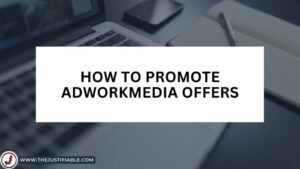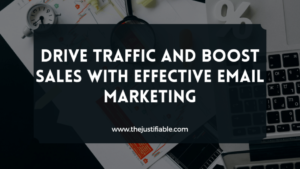Table of Contents
Are you starting your journey as an online marketer, or perhaps you’re looking to refine your strategies? Ever wondered why, despite your best efforts, the expected results just seem out of reach? The digital marketing landscape is fraught with potential missteps that can derail your campaign’s success. But what if you could identify and avoid these pitfalls before they impact your bottom line?
The world of online marketing is dynamic and ever-evolving. Staying ahead means not just keeping up with trends but also learning from the mistakes of others. Every marketer’s goal is to create impactful, engaging campaigns that convert. However, without the right guidance, it’s easy to fall into common traps that many before you have stumbled into.
This is where we step in. Our aim is to guide you through the maze of online marketing, highlighting mistakes you should avoid and practices you should adopt. We’ll discuss everything from the misuse of analytics to the underestimation of email marketing, all to help you become a more effective online marketer. By the end of this read, you’ll be equipped with the knowledge to navigate the pitfalls of digital marketing successfully.
1. Ignoring the Power of Analytics: A 60% Drop in ROI
Have you ever launched a marketing campaign only to find it didn’t achieve its goals, leaving you puzzled about where things went wrong? This is a clear sign of the critical mistake many online marketers make: ignoring the power of analytics. Analytics isn’t just about collecting data; it’s about understanding your audience, measuring performance, and making informed decisions.
In a world driven by data, failing to leverage analytics can lead to a significant drop in return on investment (ROI). Analytics tools offer insights into who your customers are, how they interact with your content, and what strategies drive the best outcomes. Without this information, you’re essentially marketing in the dark.
Moreover, analytics allows you to refine your marketing strategies over time. It helps you identify successful elements of your campaigns and areas that need improvement. By continuously analyzing your data, you can enhance your campaigns’ effectiveness, leading to better engagement, conversion rates, and ultimately, a higher ROI.
Harnessing Data for Strategic Decisions
In the digital age, data is your most valuable asset. But having access to a sea of data isn’t enough; the real power lies in harnessing this data to make strategic marketing decisions. This is where many online marketers falter, overwhelmed by the sheer volume of data without knowing how to turn it into actionable insights.
Firstly, it’s crucial to identify the key performance indicators (KPIs) that matter most to your business. These metrics will guide your analysis and help you focus on the data that directly impacts your goals. Whether it’s website traffic, conversion rates, or customer engagement, knowing your KPIs is the first step in data-driven decision-making.
Next, utilize analytics tools to segment your data. This approach allows you to understand different audience behaviors and preferences, enabling you to tailor your marketing strategies to various segments. Personalized marketing is not just a trend; it’s a strategy that can significantly increase your campaign’s performance.
Furthermore, predictive analytics can be a game-changer for your marketing efforts. By analyzing past and current data, you can forecast future trends and consumer behaviors. This insight allows you to stay ahead of the curve, adapting your strategies to meet your audience’s evolving needs.
2. Underestimating Email Marketing’s 40x Effectiveness
Did you know that email marketing can offer an astonishing return on investment (ROI), outperforming other marketing channels by up to 40 times? This statistic highlights a crucial mistake many online marketers make: underestimating the power and effectiveness of email marketing. In a digital era where new platforms and trends often capture the spotlight, email marketing remains a cornerstone of effective digital marketing strategies, providing unparalleled direct access to your audience.
Email marketing’s strength lies in its direct and personal approach. Unlike social media or other marketing channels where your message competes with countless others for attention, emails land directly in your subscribers’ inboxes. This ensures that your message is more likely to be seen and engaged with, making it a critical tool for online marketers looking to increase their reach and impact.
Moreover, email marketing allows for incredible segmentation and personalization opportunities. By tailoring your messages to meet the specific needs and interests of segments within your audience, you can significantly increase engagement rates and conversions. Personalized emails are not just preferred by consumers; they have become expected, making it vital for marketers to adopt sophisticated email marketing strategies.
However, the effectiveness of email marketing does not solely depend on sending emails. It requires a deep understanding of your audience, a clear strategy, and the ability to create compelling content that resonates with your subscribers. Many online marketers overlook these aspects, focusing instead on quantity over quality, leading to missed opportunities for engagement and conversion.
Crafting Persuasive Email Campaigns That Convert
Creating persuasive email campaigns that convert requires more than just a compelling subject line. It’s about understanding your audience deeply, delivering value in every email, and guiding your subscribers towards taking action. The art of crafting emails that convert lies in the subtle balance between providing useful content and making persuasive calls to action.
Firstly, every email should start with a clear understanding of its purpose. Are you looking to inform, engage, or convert? By having a clear goal for each email, you can tailor your content to meet that objective, making your emails more focused and effective. This targeted approach ensures that your emails serve a specific purpose in your overall marketing strategy, moving subscribers down the funnel.
Next, the content of your emails should be both informative and engaging. Provide value to your subscribers by sharing insights, tips, and information they cannot find elsewhere. This not only establishes your authority in your field but also builds trust with your audience, making them more likely to engage with your calls to action.
Moreover, personalization goes beyond addressing your subscribers by their first name. It involves tailoring content based on their interests, behaviors, and past interactions with your brand. Advanced segmentation strategies allow you to create highly targeted campaigns that resonate with different segments of your audience, increasing the relevance and effectiveness of your emails.
Finally, a persuasive email campaign is not complete without a clear and compelling call to action (CTA). Whether you’re encouraging a purchase, inviting feedback, or promoting content, your CTA should be clear, concise, and easy to find. By making it effortless for subscribers to take the next step, you increase the chances of conversion, driving the success of your email marketing efforts.
3. Neglecting SEO: A Missed Opportunity for 70% of Marketers
“SEO is no longer just a strategy; it’s the backbone of a successful digital presence,” a sentiment echoed by industry leaders time and again. Yet, astonishingly, 70% of marketers still overlook SEO’s crucial role in their online strategy. This neglect represents not just a missed opportunity but a significant gap in harnessing the full potential of digital marketing to reach and engage target audiences effectively.
SEO, or Search Engine Optimization, is the art and science of enhancing your online content so that a search engine likes to show it as a top result for searches of a certain keyword. For online marketers, SEO is not just about getting more website traffic. It’s about attracting the right kind of traffic – potential customers looking for what you offer. Ignoring SEO means you’re not where your audience is searching, significantly reducing your chances of reaching them.
The dynamic nature of SEO demands constant attention and adaptation. Search engines continually update their algorithms, and what worked yesterday might not work today. This continuous evolution makes SEO intimidating for many marketers, leading to its neglect. However, the essence of SEO remains consistent: providing valuable, relevant content that meets the needs of your audience.
Moreover, SEO is integral to building brand authority and trust online. High rankings in search results signal to potential customers that your brand is a credible source in your industry. This perception is invaluable in a crowded digital marketplace where trust can significantly influence purchasing decisions. By neglecting SEO, marketers are not just missing out on traffic; they’re passing up the chance to build a reputable brand identity.
SEO Essentials Every Online Marketer Must Know
Understanding SEO is crucial for any online marketer aiming to enhance their digital presence effectively. The foundation of SEO is built on several key elements that, when executed correctly, can significantly improve your site’s visibility in search engine results, driving more relevant traffic to your website.
Firstly, keyword research is the cornerstone of effective SEO. It involves identifying the terms and phrases your target audience uses when searching for products, services, or information related to your business. Integrating these keywords naturally into your content ensures that your website is more likely to appear in search results for those terms, thereby attracting more relevant visitors.
Content quality cannot be overstated in its importance for SEO. Search engines favor content that is not only keyword-rich but also valuable and engaging for readers. High-quality content satisfies user queries, keeps them engaged on your site, and encourages them to return. This engagement signals to search engines that your website is a reliable source of information, thus improving your rankings.
Technical SEO is another critical aspect that online marketers must not overlook. It involves optimizing your website’s technical elements to help search engines crawl and index your site more effectively. This includes optimizing site speed, ensuring mobile-friendliness, and implementing structured data. These technical optimizations make your website more accessible to both search engines and users, enhancing the overall user experience.
Lastly, link building is a powerful strategy in the SEO toolkit. It involves acquiring hyperlinks from other reputable websites to your own. Search engines use these links as indicators of your website’s authority and relevance. A strong backlink profile can significantly boost your site’s visibility and ranking in search results. Effective link building requires creating valuable content that others want to link to and engaging in strategic outreach.
4. Overlooking Mobile Users: Risking 50% of Global Traffic
Just as a store would not ignore half its potential customers walking through the door, online marketers cannot afford to overlook mobile users, who now represent approximately 50% of global web traffic. This shift towards mobile browsing is akin to the transition from traditional retail to e-commerce. It’s not just a trend; it’s a fundamental change in how consumers access information and make purchasing decisions. Ignoring this shift means potentially missing out on half of your audience, a mistake no savvy online marketer can afford to make.
Mobile users come with specific expectations: fast load times, easy navigation, and content that’s optimized for small screens. Websites that fail to meet these expectations can experience high bounce rates, low engagement, and ultimately, diminished conversion rates. This mobile-first world demands that online marketers adapt their strategies to cater to the needs of this growing audience. Not doing so can lead to your online presence lagging behind, as competitors who prioritize mobile optimization capture more of the market.
Moreover, search engines like Google have recognized the importance of mobile-friendliness by making it a ranking factor. This means that websites optimized for mobile are more likely to appear higher in search results than those that are not. It’s a clear signal to online marketers that mobile optimization is not just about enhancing user experience; it’s also crucial for SEO success. Ignoring this can significantly impact your website’s visibility and organic search traffic.
The journey of adapting to a mobile-first approach involves more than just responsive design. It includes understanding the mobile user’s behavior, preferences, and how they interact with your content differently than desktop users. Online marketers must employ a comprehensive strategy that encompasses all aspects of mobile optimization, from technical performance to content layout, ensuring that mobile users are not just accommodated but prioritized.
Optimizing for the Mobile-First World
In the mobile-first world, optimizing your online presence for mobile users is not just an option; it’s a necessity. This starts with responsive design, ensuring that your website automatically adjusts to fit the screen size and resolution of any device. But true mobile optimization goes beyond just the technical aspects; it’s about creating a seamless, user-friendly experience that meets the unique needs and behaviors of mobile users.
The first step is to prioritize speed. Mobile users expect quick load times, and even a one-second delay can significantly impact user satisfaction and conversion rates. Online marketers must focus on optimizing images, leveraging browser caching, and minimizing code to enhance site speed. These technical improvements not only benefit your mobile audience but also contribute positively to your search engine rankings.
Next, consider the mobile user’s journey on your site. Navigation should be intuitive, with a clear and easily accessible menu. Buttons and links must be touch-friendly, with enough space to prevent accidental clicks. This user-centric approach ensures that mobile users can navigate your site effortlessly, leading to a better overall experience and increased engagement.
Content for mobile users should also be optimized for readability and interaction. This means using larger font sizes, shorter paragraphs, and mobile-friendly formats like bullet points and lists to enhance readability. Additionally, incorporating interactive elements such as swipeable galleries or tap-to-call buttons can significantly improve the mobile user experience by catering to the way mobile users interact with their devices.
Finally, mobile optimization should be an ongoing process, not a one-time fix. Regular testing and updates are crucial to stay ahead of the curve in a rapidly evolving digital landscape.
5. Skipping Personalization: The Secret to Doubling Engagement
Believe it or not, simply addressing your customers by their first name in an email can double, if not triple, the engagement rate. It’s a startling reminder of the power of personalization in today’s marketing world. Yet, many online marketers still skip this step, sticking to generic messages that fail to resonate with their audience. Personalization is not just a buzzword; it’s a proven strategy that leverages customer data to deliver relevant content, offers, and messages, significantly enhancing the customer experience and engagement.
The essence of personalization lies in its ability to make each customer feel uniquely understood and valued. In a digital space crowded with information and options, personalized content cuts through the noise, directly speaking to the interests and needs of the individual. This level of personal attention fosters a deeper connection between brand and customer, driving loyalty and conversion rates in the process.
Implementing personalization goes beyond the mere inclusion of a customer’s name. It involves analyzing customer behavior, preferences, and past interactions to tailor marketing messages that are highly relevant and engaging. This approach requires a robust data collection and analysis strategy but the payoff in customer engagement and satisfaction is well worth the effort. Personalized marketing campaigns consistently outperform their generic counterparts, delivering higher open rates, click-through rates, and conversion rates.
However, the challenge for online marketers is to balance personalization with privacy. Customers are increasingly concerned about how their data is used, so transparency and respect for customer privacy are paramount. Successful personalization strategies are those that not only personalize content but also build trust by clearly communicating how customer data is used to enhance their experience.
Implementing Personalization in Your Strategy
To effectively implement personalization in your marketing strategy, start by gathering and analyzing data about your customers. This includes demographic information, browsing behavior, purchase history, and any other data points that can help you understand your audience on a deeper level. The goal is to identify patterns and preferences that can inform personalized content and offers.
Next, leverage technology to automate the personalization process. Modern marketing tools and platforms offer advanced features like segmentation, behavioral triggers, and AI-driven recommendations that can help you deliver personalized experiences at scale. These technologies allow you to reach the right person with the right message at the right time, maximizing the impact of your marketing efforts.
Content creation is another critical component of personalization. The content must be relevant and valuable to the audience segment it’s intended for. This could mean creating multiple versions of emails, landing pages, or ads tailored to different segments of your audience. The key is to make each piece of content feel as though it was crafted specifically for the individual receiving it.
Finally, continuously test and refine your personalization efforts. Personalization is not a set-it-and-forget-it strategy. It requires ongoing analysis and adjustment to ensure that you’re meeting the evolving needs and preferences of your audience. Regularly reviewing the performance of personalized campaigns and making necessary adjustments ensures that your strategy remains effective and engaging.
Your Blueprint to Online Marketing Success
Embarking on the journey of online marketing can often feel like navigating through a maze with countless turns and dead ends. Yet, armed with the right blueprint, the path to success becomes much clearer and more navigable. This journey isn’t just about avoiding pitfalls; it’s about embracing strategies that propel you forward, turning potential obstacles into stepping stones for growth. As we’ve explored the common mistakes and the powerful strategies to overcome them, remember that each insight serves as a building block for your online marketing success.
The digital landscape is ever-evolving, and so should your online marketing strategies. Staying informed, flexible, and ready to adapt is key. Whether it’s leveraging the power of analytics, harnessing the potential of email marketing, optimizing for SEO, prioritizing mobile users, or personalizing your marketing efforts, each strategy plays a critical role in your overall success. Integrating these approaches allows you to create a comprehensive online marketing plan that not only reaches but resonates with your audience.
Success in online marketing doesn’t come from avoiding mistakes alone; it comes from learning, adapting, and innovating based on those lessons. The beauty of digital marketing lies in its data-driven nature, offering endless opportunities to refine and improve your strategies. It’s a process of continual learning and growth, where each campaign provides valuable insights that shape future successes.
Next Steps: Evolving Beyond Common Mistakes
As you move forward, it’s crucial to keep the momentum going, evolving beyond common mistakes to forge a path that leads to sustained online marketing success. The digital world is dynamic, and staying ahead requires a commitment to ongoing education, experimentation, and optimization. Your growth as an online marketer is a journey of continuous improvement, where each step forward is informed by the lessons of the past and the possibilities of the future.
Begin by setting clear, measurable goals for your online marketing efforts. These objectives should not only reflect your business aspirations but also the needs and interests of your audience. From there, develop a strategy that aligns with these goals, leveraging the insights and tactics discussed. Remember, a well-crafted plan is only as good as its execution. Regularly monitor your progress, analyze the results, and be prepared to pivot your strategies as needed.
Embrace the power of community and collaboration. The online marketing world is vast, with experts, peers, and communities willing to share knowledge and experiences. Engaging with these resources can provide fresh perspectives, inspire new ideas, and offer support as you navigate your marketing journey. Whether it’s through forums, social media, or professional networks, building connections can enrich your understanding and approach to online marketing.
Lastly, never lose sight of the human element in your marketing efforts. Technology and tactics are important, but at the heart of every successful campaign is a deep understanding of and empathy for your audience. By focusing on creating genuine value and building meaningful relationships, you can elevate your online marketing from mere transactions to lasting engagements. This human-centric approach is the essence of marketing that not only achieves business goals but also enriches lives.
Frequently Asked Questions (FAQ)
What are common mistakes online marketers make?
Common mistakes online marketers make include ignoring analytics, underestimating the power of email marketing, neglecting SEO, overlooking mobile users, and skipping personalization. These errors can significantly impact the effectiveness of digital marketing campaigns and reduce ROI.
Why is analytics important for online marketing?
Analytics is crucial for online marketing because it provides insights into audience behavior, campaign performance, and overall ROI. By analyzing data, marketers can make informed decisions, optimize strategies, and target their audience more effectively, leading to better results.
How can I improve my email marketing strategy?
To improve your email marketing strategy, focus on segmentation, personalization, and providing valuable content. Use analytics to track performance and continuously refine your approach based on what works best for your audience. Also, ensure your emails are mobile-friendly and include clear calls to action.
What is the role of SEO in digital marketing?
SEO (Search Engine Optimization) plays a vital role in digital marketing by improving a website’s visibility in search engine results. Effective SEO helps attract organic traffic, increase brand credibility, and drive potential customers to your site by targeting relevant keywords and providing valuable content.
How does neglecting mobile users affect online marketing?
Neglecting mobile users can lead to high bounce rates, low engagement, and reduced conversions. With nearly half of all web traffic coming from mobile devices, it’s essential to optimize websites and content for mobile to ensure a seamless user experience and maximize reach.
Why is personalization important in marketing?
Personalization is important in marketing because it helps create a more relevant and engaging experience for each user. By tailoring content and offers based on individual preferences and behaviors, marketers can increase engagement, build stronger relationships, and boost conversion rates.
What are some effective strategies for improving SEO?
Effective SEO strategies include conducting thorough keyword research, creating high-quality content, optimizing technical aspects of your website, building backlinks, and regularly updating content. Additionally, focusing on user experience, mobile optimization, and local SEO can significantly improve search rankings.
How can I use data to improve my marketing campaigns?
You can use data to improve marketing campaigns by analyzing key metrics such as website traffic, conversion rates, and customer behavior. This information helps identify what works and what doesn’t, allowing you to adjust strategies, target the right audience, and optimize resources for better outcomes.
What is the importance of a mobile-friendly website?
A mobile-friendly website is important because a significant portion of users access the internet via mobile devices. A mobile-friendly site ensures a positive user experience, which can lead to higher engagement, lower bounce rates, and improved SEO rankings. It’s essential for reaching and retaining a mobile audience.
How can I avoid common digital marketing mistakes?
To avoid common digital marketing mistakes, stay informed about industry best practices, regularly analyze your data, focus on your target audience, and continuously optimize your strategies. Avoid neglecting analytics, SEO, email marketing, mobile users, and personalization to enhance your marketing efforts.






